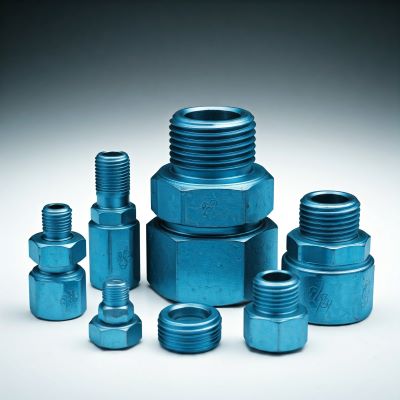Boss fittings are specialized connectors used in various industrial applications to join pipes and tubes securely. They are known for their exceptional strength and durability, making them ideal for high-pressure and demanding environments.
The Anatomy of a Boss Fitting
A typical boss fitting consists of several key components:
➡️ Body: The main part of the fitting, often forged from high-quality materials like carbon steel or stainless steel.
➡️ Threaded End: This end allows for easy connection to other threaded components.
➡️ Boss: A raised, reinforced area on the body, providing additional strength and support.
Why Strength Matters
Industrial settings often involve harsh conditions such as high pressure, extreme temperatures, and corrosive substances. Boss fittings are engineered to withstand these challenges, ensuring reliable performance and preventing costly failures.
Forging is a primary manufacturing method used to create boss fittings. This process involves shaping metal under intense pressure, resulting in a denser and stronger product.
Advantages of Boss Fittings
➡️ Enhanced Leak Resistance: The unique design of boss fittings minimizes the risk of leaks, even in high-pressure applications.
➡️ Longevity: Forged boss fittings are built to last, reducing the need for frequent replacements.
➡️ Compatibility: They can be used with a wide range of materials and components.
➡️ Lower Maintenance: Their robust construction minimizes maintenance requirements.
Key Applications
Boss fittings find applications in various industries, including:
➡️ Gas and Oil: Utilized in drilling operations, refineries, and pipelines.
➡️ Manufacturing: Employed in hydraulic and pneumatic systems.
➡️ Construction: Used in fire sprinkler and plumbing systems.
Choosing the Right Boss Fitting
When selecting a boss fitting, consider the following factors:
➡️ Size: Choose the appropriate size to match your piping system.
➡️ Material: Select a material that is compatible with the fluids being transported and the environmental conditions.
➡️ Pressure Rating: Ensure the fitting can handle the maximum pressure in your application.
Maintaining and Extending the Life of Boss Fittings
➡️ Proper Installation: Follow manufacturer’s guidelines for correct installation.
➡️ Frequent Inspection: Keep an eye out for signs of wear, corrosion, or degradation.
➡️ Avoid Overtightening: Excessive tightening can damage the threads.
Conclusion
Boss fittings are essential components in countless industrial applications. Their strength, durability, and versatility make them a valuable asset for engineers and technicians worldwide.
By understanding their unique features and benefits, you can select the right fittings to ensure the safety and efficiency of your systems.
Post time: Nov-15-2024


